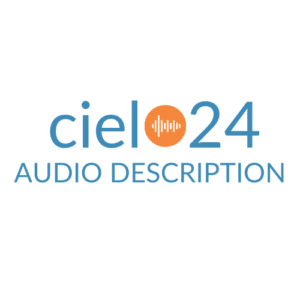Helpful Video Accessibility Terms for Enterprise and Education Whether you work in business or higher education,…

Video Accessibility: Key Terms and Resources
With an estimated 1 billion people with disabilities worldwide and the fact that the Internet has no borders, the existence of a single accessibility standard has been hugely helpful in providing and managing global online accessibility. This is especially true for video accessibility and the strides that have been made to make this medium more accessible to those with disabilities.

This is a list of ten video accessibility key terms that will inform you as you implement accessibility initiatives within your organization.
Video Accessibility Key Terms
Closed Captions
Captions are the visual text display of the audio portion of the video or audio media. Closed captions can be turned on or off with the click of a button and are native-language to the medium rather than a translation to another language. They are more commonly used as a service to help deaf and hard of hearing audiences, but there are many other benefits including improving discovery, retention, engagement, and SEO.
Open Captions
Open captions are different from closed captions in that they are part of the video itself and cannot be turned off. Open captions do not provide search engines with a text form of the video like closed captions do, and thus do not incur any of the added benefits listed above.
Subtitles
Subtitles are translations for people who don’t speak the language on the video. Standard subtitles assume the viewer hears the audio. Subtitles for the Deaf and Hard of Hearing are written in a format that understands that the viewer may not be able to hear the audio so it adds information about background sounds and who is speaking along with a translation of the script.
Transcripts
A transcript is the written or printed version of your video or media content. As a result of posting media transcripts, search engines will be able to “read” your media. Currently, there is no way for technology to “watch” your video, so you must turn your video into SEO-friendly transcribed text.
ASR
Automatic speech recognition is a technology that can be used to create captions, but these captions are not useful for accessibility compliance. These captions are used to power search for topics discussed across a video library. While convenient, ASR-generated captions are not acceptable for accessibility conformance and do not power increased user engagement.
Disability
According to the ADA, an individual with a disability is defined as a person who has a physical or mental impairment that substantially limits one or more major life activities, a person who has a history or record of such an impairment, or a person who is perceived by others as having such an impairment.
Audio Description
Audio description is a spoken narration track played along with the video that allows blind and visionimpaired users to know what’s happening on the screen. This must include all visual information.
W3C
The World Wide Web Consortium is the international standards organization for the web. They develop protocols and guidelines that ensure the long-term growth of the web for everyone. WC3 issued the creation of the Web Accessibility Initiative. WAI is responsible for creating and updating web accessibility standards. These are called the Web Content Accessibility Guidelines 1.0 and 2.0, or simply WCAG 1.0 and 2.0.
Assistive Technology
Assistive Technology is an umbrella term that includes assistive, adaptive, and rehabilitative devices for all people including people with disabilities, and also includes the process used in selecting, locating, and using them.
Universal Design
Universal design for learning (UDL) is a framework to improve and optimize learning for all people. Material is presented in formats that address more than one sense, learning style, or ability. Consideration is given to those with physical or learning disabilities, as well as ESL (English as a Second Language) or any other factor that keeps the person from learning in a single format.
Video Accessibility Resources and Tools
By definition, video accessibility is the ability for people with cognitive, physical, or learning disabilities to experience and understand online video content. Video accessibility is imperative to an equal viewing experience. While videos are not always fully accessible, the following best practices are essential for those with disabilities. A video can be made accessible by:
- Assistive technologies (such as screen readers)
- The way a video is created
- How the video is inserted into the site
- Providing a transcript, audio description, and closed captions
Accessibility Tools
- Photosensitive Epilepsy Analysis Tool – a free, downloadable resource to aid developers in identifying seizure risks within video and web content
- ChromeVox – a free chrome browser extension that allows you to screen read any website
- Color Contrast Check – a free, online checker that allows developers to check their background and text colors against WCAG requirements
cielo24 provides Audio Description accessibility solutions
 Looking for Audio Description? Get started with WCAG 2.1 AA compliant Audio Description product.
Looking for Audio Description? Get started with WCAG 2.1 AA compliant Audio Description product.
cielo24’s new Audio Description solution brings an improved video experience to people with low vision, vision impairment, and blindness. Give it a try now >>



